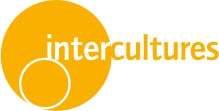
Note: The following article was included in our Nov. 2016 intercultures e-newsletter. Email the Editor to receive our next bi-monthly edition in your inbox well in advance of website postings. We offer fresh, intercultural information and insights for working better globally.
-
Some say that the recent events of the Presidential election in the U.S. and “Brexit” in the U.K. mark a shift in the world as we have known it. To whatever extent these national and regional events influence us internationally, there is perhaps a more immediate question that requires our response. It’s a question that recurs in relation to meaningful, socio-political events throughout modern world history. At sunrise, and over our bowls of rice or yoghurt or bread, this question greets us the morning after such events. The curious eyes of the youngest amongst us want to know what it all means. What do we tell our children?
In the dozens of intercultures’ e-communications shared, we trust that the scope of our competence has been well understood. We are a provider of competence-based intercultural interventions; together with you, we develop solutions to work better in global complexity. Often, we have reported the local—and even “glocal”—application of the quality of competence we promote. That said, we have approached the question posed by this article title from the perspective of what we know we know well—and welcome parents and professionals alike to share their thoughts, as well.
The question behind the question is how to explain realities that are often contrary to the worlds that we create for our children. It speaks to our own lack of knowing in a world we may sometimes feel we know too much about. Why not learn what will fuel the kind of world that you want to help make possible?
Think of the classic diagram of one circle within another, within another. Three circles, total. The innermost circle represents What We Know; the circle around that represents What We Know We Don’t Know; the largest circle around them both represents What We Don’t Know We Don’t Know. It’s at this widest scope that we risk failing at what is important to us: whatever our “bottom line” may be.
Arguably, equally as important as What We Know is learning What We Don’t Know We Don’t Know and need to learn more about. If you have found yourself positively engaged with the content of intercultures’ e-newsletters, or the experience of our training and coaching, you are uniquely a part of the endeavor to expand the possibilities of knowing and becoming. Expanding our understanding of that to which we are blindsighted opens opportunity to close the gap, engage with others in doing so, and innovate something that you couldn’t have seen without having first come together. To what extent is this the kind of world that you want to make possible?
Our response to the title of this article is that we tell our children—literally or figuratively—how we’re working at our jobs. Tell them what you’re learning about working better globally. Teach them how to do it locally: In kindergarten; at high school; with friends and neighbors, known and not yet known. Explain the culture-based values, beliefs and behaviors that you are passing on to them, as you have learned—and are actively learning about—them. Teach our children how to interpret unfamiliar and familiar behaviors from multiple perspectives; observe to learn; negotiate towards mutual benefit with progressive knowledge of the people in their classrooms, after school clubs and part-time jobs. Help them practice using their voice to ask from a place of curiosity; affirm shared values; and advocate towards increased inclusion for themselves and all others. Ask them what it means to be a part of a team; to be a strong contributor; to find success. Challenge them to think critically as you do each day at work. These are the skills that they will need to do good—and do well—when it comes time for our young people to enter the workforce, pick up the “torch” and affect profitable change in more ways than one.
However you reconcile what to tell our children after the explosion of excitement, after fear felt in the aftershock of significant world events, we humbly suggest that you empower them to be curious about the world, others and themselves. Again and again—in study after study, and in day-to-day practice—we’re learning that the energy invested in knowing more about what we don’t know opens worlds of possibility—for both us and generations to come.

